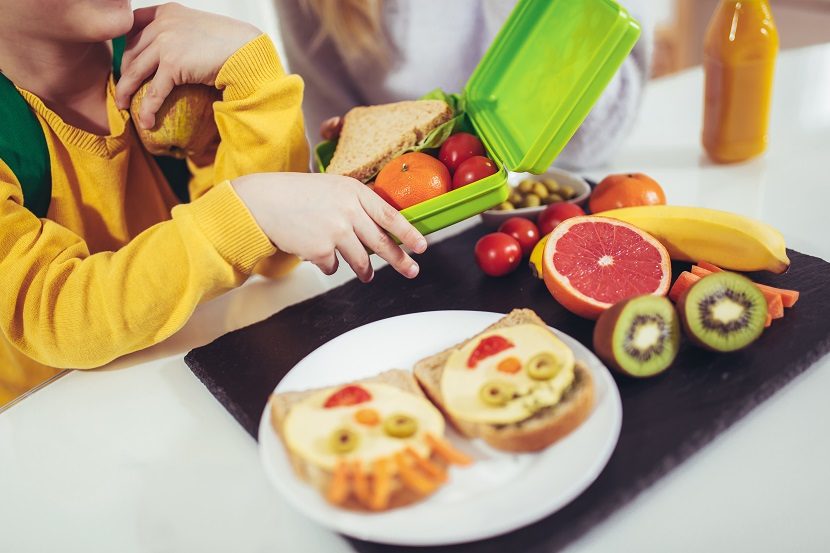
A team of Italian experts, coordinated by the Nutrition Foundation of Italy, recently published, in the prestigious Journal of Food Science and Nutrition, a review of the “Snacking in nutrition and health”, gained through the analysis of scientific literature published around the world.
It may seem an oxymoron since in Italy snacking is regarded as the bad habit of uncontrolled eating at random in between meals without hunger, and so, from this point of view, it is difficult to associate it with a healthy lifestyle and a balanced diet.
The English term “snacking” is used to indicate mid-morning and mid-afternoon snacks. These are very different from eating randomly between meals as they have a specific purpose within the dietary routine being taken at precise times during the day and must meet specific nutritional requirements.
There is a multitude of scientific evidence to support the fact that splitting the daily distribution of energy and the supply of nutrients into 4-5 occasions, instead of concentrating them in just 3 meals main factors, have a positive impact on the overall quality of the diet and metabolism:
-
Consuming a snack in mid-morning and/or mid-afternoon avoids digestive and metabolic overload.
-
It improves the control of calorie intake in main meals by contributing to body weight control, which is why these two meals generally take the name of “starvation break”. Having a small snack between meals helps in coming to main meals less hungry and, consequently, encourages greater thoughtfulness in the choice of the quality and quantity of the food at those main meals.
-
Splitting nutrients into several occasions helps to reduce the overall glycemic load of meals and makes it possible to maintain a constant concentration of circulating glucose, avoiding the occurrence of peaks and troughs glycaemic peaks and troughs and keeping insulin levels low.
-
For those who perform intense physical activity, starvation breaks help restore glycogen reserves and keep muscle tissues intact.
-
Lipolysis (i.e. consumption of triglycerides) becomes more active.
Obviously, snacks should not substitute for proper general nutrition and should not add additional calories to the daily intake. Snacks should be part of the balanced daily diet: basically, the quality and quantity of food eaten during breakfast, lunch and dinner should guide the choice of snack that best suits your habits and needs.
In general, the mid-morning snack should account for about 5-8% of the daily calorie intake while the mid-afternoon snack, as the time between lunch and dinner is generally longer than between breakfast and lunch, should be a little more complex and account for about 7- 10% of the total daily calories.
Snacks take on a different role during different stages of life:
-
In childhood, fitting in two snacks during the day serves to improve the qualitative index of nutrition and teaches children from the earliest age to acquire correct eating habits.
-
In adulthood, in contrast, snacks help regulate hunger and consequently promote balanced hormonal secretion as well as the control of blood sugar, body weight and lipid profile.
-
For the elderly, snacks help to round out the diet. Malnutrition in older people is quite common. It is mainly attributable to dietary choices that with increasing age become more limited and, at the same time, complex because they are influenced by both biological and environmental, and also social and psychological factors.
But which characteristics should a starvation break have in order to make a positive impact on nutrition?
Obviously, not all snacks are suitable for a healthy diet. Most packaged snacks on the market, for example, are rich in additives, sugars, salt and saturated or hydrogenated fats for the sole purpose of having a more appetising taste and texture. While it is true that snacks can also fill the role of “comfort food” (that is, a food that satisfies both from the point of view of taste and psyche), it is also true that the daily balance of nutrients and energy must be respected. This means that snacks must be studied and calibrated taking into account individual age, sex, lifestyle and level of physical activity.
Below are some foods that could become part of a balanced snack which provides a sensation of satiation and enjoyment:
-
Nuts and dehydrated fruits, for example, dehydrated prunes, which help maintain the state of satiety and have a low glycemic index;
-
Dairy products, such as natural yoghurt or low-fat cheese, or otherwise a protein food;
-
Fruits and vegetables, source of vitamins, minerals and fibre;
-
Bakery products are free of saturated or hydrogenated fats (preferably cereal products with a 50% wholegrain content).
Water is the best drink to accompany meals since it maintains hydration throughout the day, which is essential for the entire body to function correctly.
To sum up, it is internationally recognized that dividing up daily calories and nutrients into four to five occasions, rather than concentrating everything in the three main meals, is beneficial from the metabolic point of view. To avoid overeating, it is essential to always stick to a timetable with snacks mid-morning and mid-afternoon, to check the energy content and composition of the foods you choose to eat and to adapt them to your needs.
Sources and insights:
Franca Marangoni, Daniela Martini, Silvia Scaglioni, Michele Sculati, Lorenzo Maria Donini, Francesco Leonardi, Carlo Agostoni, Gianluca Castelnuovo, Nicola Ferrara, Andrea Ghiselli, Michelangelo Giampietro, Claudio Maffeis, Marisa Porrini, Bianca Barbi & Andrea Poli (2019) Snacking in nutrition and health, International Journal of Food Sciences and Nutrition, DOI: 10.1080/09637486.2019.1595543
http://www.nutrition-foundation.it/apb-alimentazione–prevenzione-benessere-n-4—2019.aspx